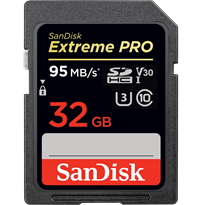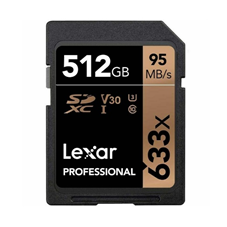SDXC vs SDHC: What’s the Difference?
By: Linda On: 5 November 2024

Anyone that has worked with digital media in the past has likely heard of an SD card but at the same time may be unaware of the subtle difference between SDXC vs SDHC cards. Understanding the differences between the two can help you select the best option for your chosen application – whether it be digital photography or video.
What Is An SD Card?
To better understand SDXC (Secure Digital Extended Capacity) and SDHC (Secure Digital High Capacity) cards, it’s best to start with the predecessor to the two: the SD card.
SD stands for Secure Digital and was developed by the SD Association – a joint effort between SanDisk, Panasonic and Toshiba – in 1999 to be a better-performing, non-volatile memory card format. This means that SD cards did not require a power supply in order to retain data, unlike the previously popular MMC (MultiMedia Cards) format.
SD cards can store files, pictures, videos, music, and many other forms of data. These days you’ll find them in everything from cameras and phones to gaming consoles, usually to expand the memory of those devices, but also due to their portable and cost-effective nature.
SDXC and SDHC cards evolved from the original SD card over many years to meet the growing demands of data storage, eventually making the original SD cards obsolete.
The Main Differences Between SDXC vs SDHC

Just as SDXC and SDHC cards differ from the original SD card, so too do they differ from each other.
There are a few key differences, including:
- Storage capacity. SDXC cards offer up to 2TB of storage, while SDHC cards usually only offer up to 32G.
- Compatibility. While SDHC are compatible with both SDHC and SDXC devices, SDXC cards are not reverse-compatible with SDHC devices.
Outside of these key differences, SDHC and SDXC cards are relatively similar. They both use speed ratings to determine read and write speed: Classes 2, 4, 6, and 10, with Class 10 having the fastest performance of 10 megabytes per second. High-end SD cards use a few other speed classes, including UHS (ultra-high speed) class and V (video) speed class. These speeds need to be taken into consideration if you are filming or photographing in high-resolution, since a higher speed card will better handle the transfer rate of high-definition recording.
Which Memory Card Do You Need?
There’s more to choosing a memory card than opting for the card with the biggest capacity. Ideally, you’ll want to look at the device you’re using and what you intend to do with it. For example, if you’re shooting video in 4K, you’ll want a speed class of U3 or V30 or higher. If you’re looking to expand the internal memory of your Nintendo Switch, you’ll need to take into account how many physical game copies you have vs how many games you download from the Nintendo online store.
What Is The Best SD Card?

Overall, we recommend the SanDisk Extreme Pro line for most applications. While you can purchase faster cards, their price jumps rather abruptly. The Extreme Pro range is a great balance of durability (they’ve been developed to withstand water, shock, extreme temperatures, and even X-rays), speed and capacity. And because of their price point, you can afford to have a few on hand at a time.

The Lexar Professional series is another popular option, though they tend to be a bit pricier than SanDisk. However, you can expect some of the best SD cards around, supporting extremely high speeds, reliability, and storage capacity.
You can shop all of our available SDXC and SDHC cards online.


